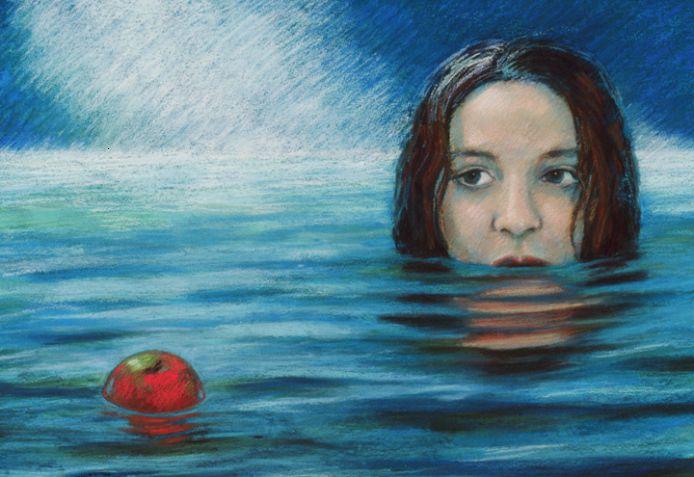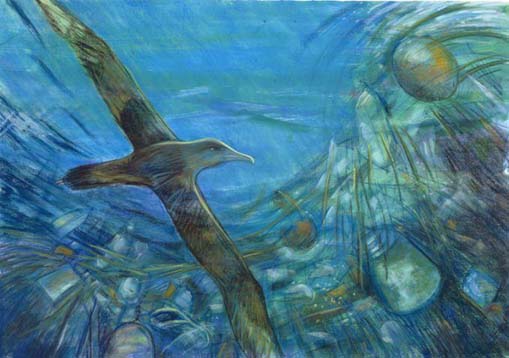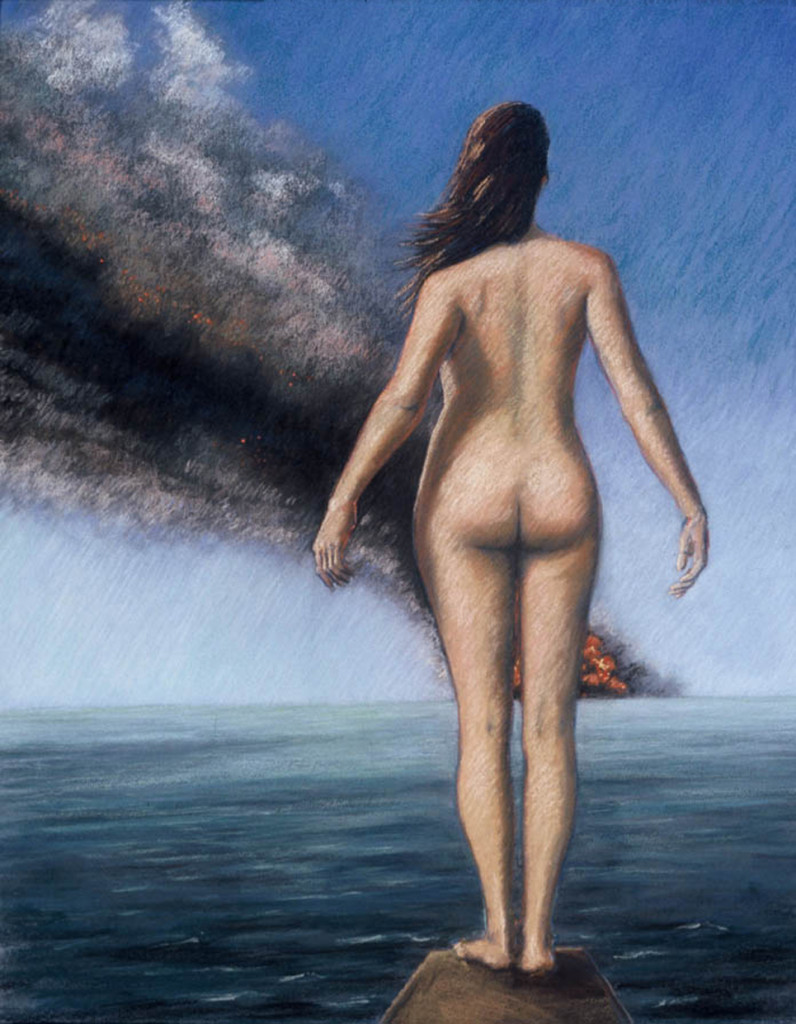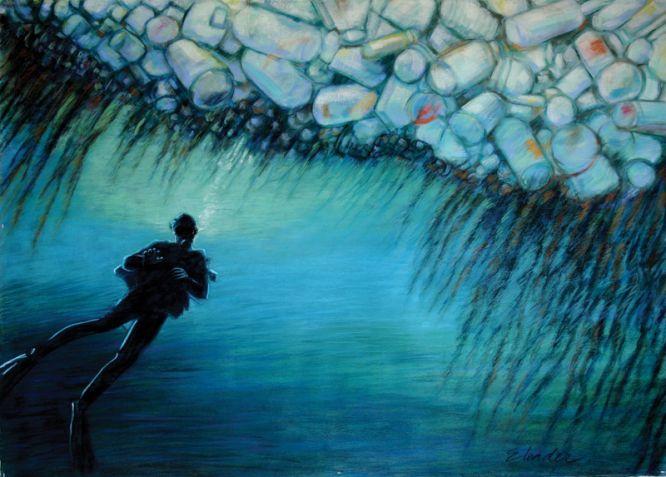
“Eve & The Apple” by Elizabeth Leader, pastel on Fabriano paper.
(See also “The Undertow” by Katie Strine.)
While everyone is trying to cram their luggage into the overhead compartments, you take the benzos out of your pocket. There are six because you are too addicted so less would be a waste of time. You press your tongue against the roof of your mouth so you can place the pills beneath it. The drug eases through the capillary walls. The sedative ducks the bile, the acid. Immediate. Straight. It swims pure into your bloodstream.
As the pills dissolve, you pull on your hoodie. You’ll be hot. The air-conditioning doesn’t come on until the plane leaves the ground, but you suck it up. You run the wires of your earbuds between your T-shirt and the hoodie’s fleece lining. The benzos are still thawing as you place the buds in your ear and cloak your head. This is all so the flight attendants won’t see you and tell you to turn off your music until the voice says, “It is now okay to use portable electronic devices.” You’ve done this a hundred times now and the plane has never crashed. This is the only rule you break while flying. You always make sure your seat back and tray table are in their full upright position and you would never, under any circumstances, tamper with the smoke detectors in the restrooms. It’s a federal law. You take most federal laws very seriously. Probably.
Before you shut your eyes, you take the copy of SkyMall from the seat pocket in front of you and turn the pages until you find the steps you can buy your wiener dog so it won’t break its back jumping on and off the couch. Once you find it and read the description and see that it still costs seventy dollars, you have a vague feeling of comfort, the kind like an itch has been scratched.
The plane begins to taxi. It means all the doors have been shut and locked, the one that has always been and the one that leads to the cockpit. The flight attendants are in the aisle asking for your full attention as they demonstrate the safety features of the aircraft. You can’t hear them because you have the volume all the way up, but your earbud slips and words creep in, “You will find this and all the other safety information in the card located in the seat pocket in front of you. We strongly suggest you read it before take-off.”
Your finger brushed the laminate as you removed the SkyMall, but that’s as close as you come to taking their suggestion. As a child you studied the card, saw cartoon people rowing yellow blow up rafts, sliding down inflatable slides. Even then, you knew those slides weren’t the same as the slides at the park. Nothing about those yellow slides was fun. You have the card memorized. It gave you nightmares. Now there are other things.
But really that’s not the reason you don’t read it. You don’t bother because you are in the after. You never forgot watching the Pentagon burn from a friend’s row house or the planes flying too low over the campus. And you’re still attempting to solve all the math problems that the too still water, that the too intimate thrumming engendered. What is the derivative of your anxiety in relation to the number of times you place your laptop in an individual container? Can you determine the upper limit at which you stop visualizing a bomb in each bag without an apparent owner? Is the square root of “Let’s Role” real or imagined? Are the answers the fundamental theorem of life as it is now?
The benzos are wrapping tight around your brain. You will feel lighter in three to four minutes. The air you breath in will come without the strain of gravity. And pretty soon the air will be free from the box cutter you used to rip through masking tape when you worked at a bookstore. This oxygen will silence the image of a slit throat and the gurgling that goes with it. And all the equations will sleep.
The music is humming to you. Gentle lyrics speak of places you can go where your high won’t fade away, where the poets write in looser verse, where you can curl into the Olympus Mons.
You inhale. The words, the drug, have wiped away the cartoons, the math, and the final piece lifts from your skin. Understand, you don’t believe in God, but you can hear your preacher saying, “You either get where you’re going or you end up at your Father’s door.” Until the plane touches down, that door is open.
Lauren Eyler is from Cape Hatteras, North Carolina. She has been published in The Saint Anne’s Review, Bluestem, The Rumpus and other journals. The primary colors are red, yellow, and blue.



